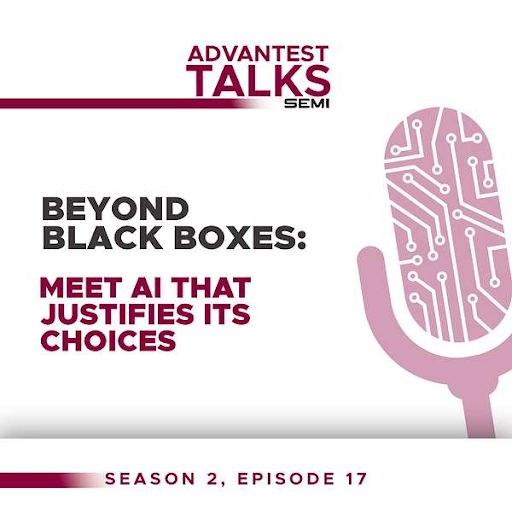By GO SEMI & Beyond staff
As most of us in the electronics manufacturing supply chain are aware, the industry is facing a talent crisis and needs to fill the tech workforce pipeline with employees qualified to perform a plethora of available jobs. In this issue, we talk with Leslie Tugman, SEMI’s Vice President of Global Workforce Development and Diversity, about what SEMI and its member companies, which include Advantest, are doing to address this challenge.
Q. How are SEMI and its High Tech University (HTU) program driving industry workforce development efforts?
A. SEMI has made workforce development and talent advocacy a top priority and dedicated significant resources and expertise to tackle the talent shortage. We offer an extensive suite of programs and initiatives addressing the problem. All are available under our umbrella program called SEMI Works™, a holistic approach to workforce development that includes SEMI High Tech U, our University Connections and SEMI Mentoring programs, and SEMI Certs. These initiatives are anchored by an industry-wide competency model we are developing that will standardize and prioritize industry-acknowledged skills and support training programs linked to the skill sets the industry needs most.
Right now, the electronics manufacturing supply chain has thousands of jobs that it can’t fill. All of these jobs require skills across science, technology, engineering and/or math (STEM). This need intensifies as technology advances, and many K-12 public school systems around the world aren’t producing enough students with an interest or aptitude for high-tech jobs. The purpose of SEMI HTU is to inspire high-school students to pursue careers in our industry by showing them how these STEM skills are relevant and can be applied in the real world.
We take students out of their traditional classrooms and bring them to an industry site for a three-day intensive course. The company facility becomes their classroom, led by an instructor who works at that site and can tell students how they’ll use what they’re learning. The program combines lectures with hands-on learning and STEM exercises as well as lessons in communication, critical thinking, teamwork, and other career/life skills. The instructors serve as role models and provide a positive industry image.
Q. How do members participate in supporting SEMI’s workforce development programs?
A. There are a number of ways that members can participate in and support SEMI HTU. Members can sponsor HTU through financial and/or in-kind contributions. They can also participate by volunteering to teach a module at an HTU program. Participating in HTU is a great way for companies to support their corporate social responsibility (CSR) programs. SEMI can deliver the program for members, or we can train member companies to be certified partners to deliver the program independently. SEMI is currently delivering two HTU sessions per month around the world.
Q. How have HTU’s workforce development efforts evolved over the past five years?
A. The constriction in the semiconductor industry’s talent pipeline didn’t happen overnight; it’s been worsening for some time. In the last several years, a number of factors – including a greater shortage of talent, the shortage of STEM-educated students, biases related to gender and diversity, and the aging workforce – have converged to narrow the pipeline even more. At the same time, the number of job vacancies has skyrocketed. SEMI has become a leader in addressing workforce development in a broad, comprehensive manner. High Tech U, our mentor program and our diversity/inclusion initiatives focus on employee recruitment and retention.
We also have a University Connections Program that puts companies such as Advantest in contact with recent or imminent graduates so that they can help them understand why the company would be a great place to work. In the past five years, we have really embraced university students and young professionals as part of the audience we want to reach. SEMICON West will again feature a Workforce Development Pavilion that connects members with emerging talent through our HTU mentoring and University Connections programs. This is a significant area of focus at SEMICON West 2019. In addition, this year, we will conduct a High Tech U – which Advantest is co-sponsoring – in a classroom adjacent to the Workforce Development Pavilion.
It’s important to note that SEMI offers global workforce development initiatives. The need to fill thousands of industry jobs is global, although causes differ by region. For example, the aging workforce is a critical factor in Japan, lagging STEM skills are a key issue in the U.S., while shoring up the industry’s image in terms of diversity and inclusion is an issue worldwide. We tie this all together with a Workforce Development Council in each region that provides guidance and validation of our initiatives.
Q. Clearly, providing inclusive work environments will be vital to attracting new workers. How are you helping members rethink their corporate culture in this regard?
A. This is a critical component in terms of attracting future tech workers. Our CEO, Ajit Manocha, is passionate about diversity and inclusion. These kinds of efforts can fail when they don’t have executive support, and he is making this a top priority.
Mentoring is an important element in recruiting and retaining women in the workforce. Our new Spotlight on SEMI Women program honors women who are working at SEMI member companies and making a difference at every level. At SEMICON West, we will be celebrating our spotlight women at the welcome reception.
We also hold diversity forums on various topics – including unconscious bias and the importance of collecting data – to aid member companies in effecting internal change. Members like Advantest have been instrumental in supporting these efforts. In addition to its HTU sponsorship and partnering in workforce development, Advantest is active on both our Workforce Development Council and our Diversity and Inclusion Council.
Q. How can readers get involved?
A. There are a variety of ways to involve your company in SEMI educational activities. Here are a few specifics to pique your interest:
Read More






